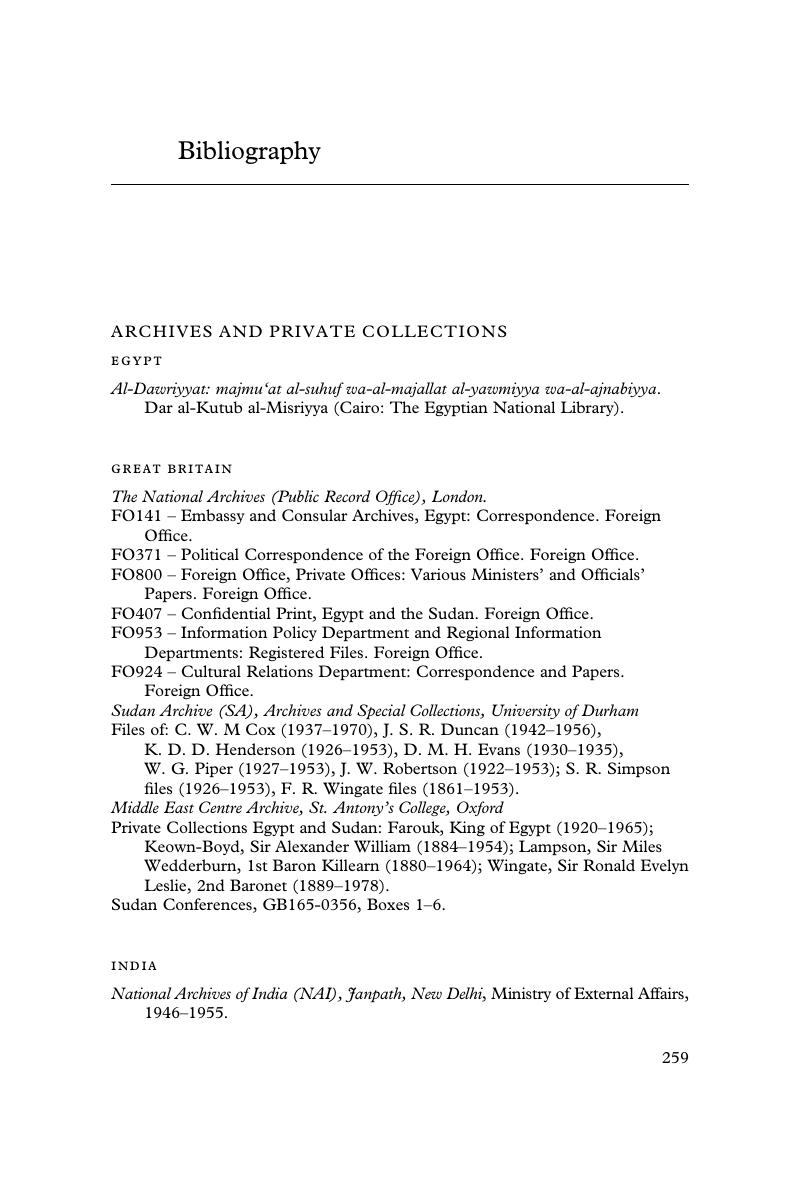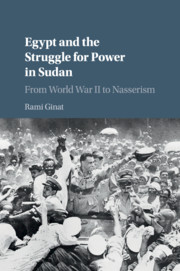Book contents
- Egypt and the Struggle for Power in Sudan
- Egypt and the Struggle for Power in Sudan
- Copyright page
- Dedication
- Contents
- Tables
- Acknowledgments
- Introduction
- Part I The Theoretical Foundations of Egypt’s Claims for the Unity of the Nile Valley
- Part II The Struggle for Sudan
- Conclusion
- Bibliography
- Index
- References
Bibliography
Published online by Cambridge University Press: 31 August 2017
- Egypt and the Struggle for Power in Sudan
- Egypt and the Struggle for Power in Sudan
- Copyright page
- Dedication
- Contents
- Tables
- Acknowledgments
- Introduction
- Part I The Theoretical Foundations of Egypt’s Claims for the Unity of the Nile Valley
- Part II The Struggle for Sudan
- Conclusion
- Bibliography
- Index
- References
Summary

- Type
- Chapter
- Information
- Egypt and the Struggle for Power in SudanFrom World War II to Nasserism, pp. 259 - 272Publisher: Cambridge University PressPrint publication year: 2017



